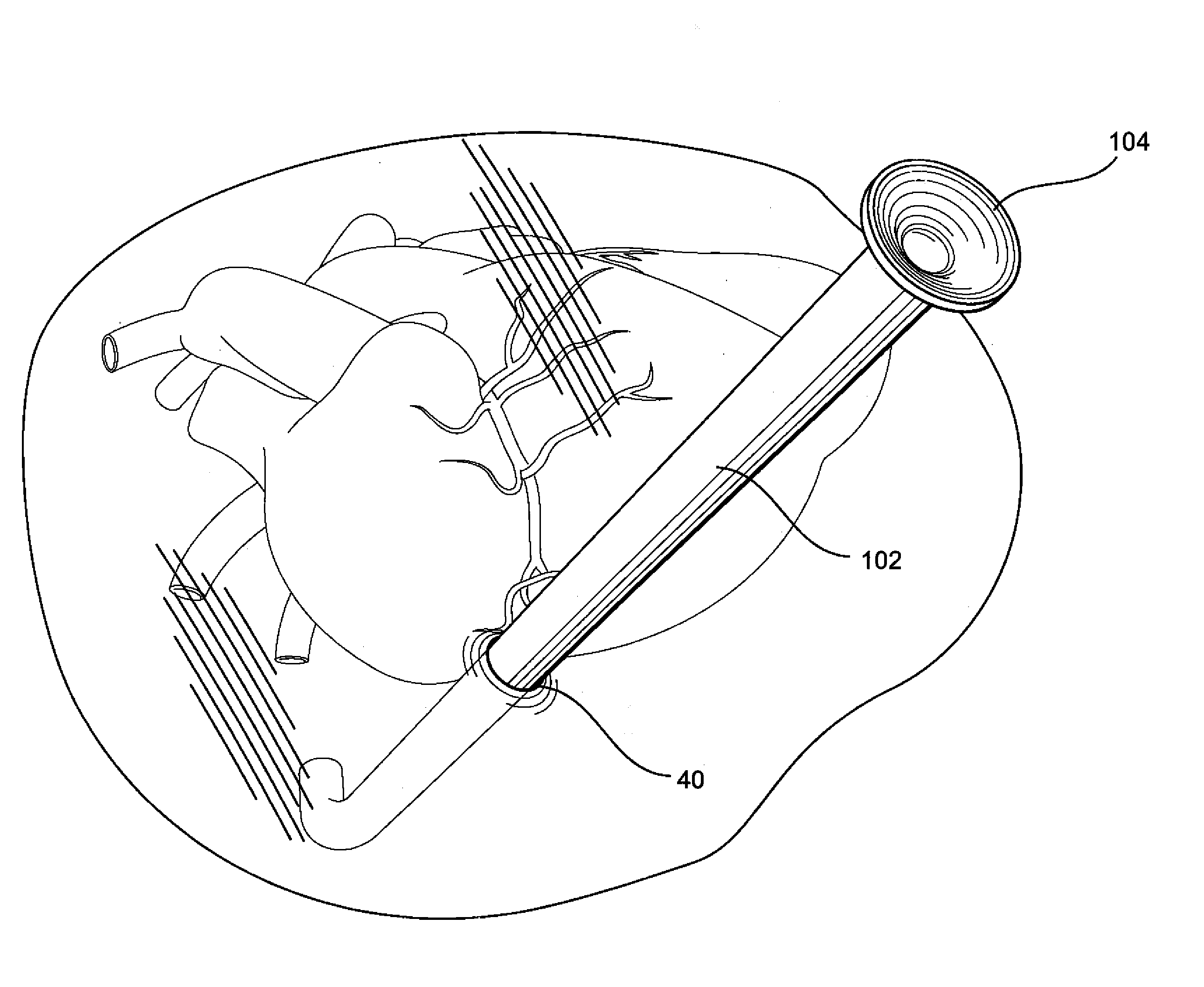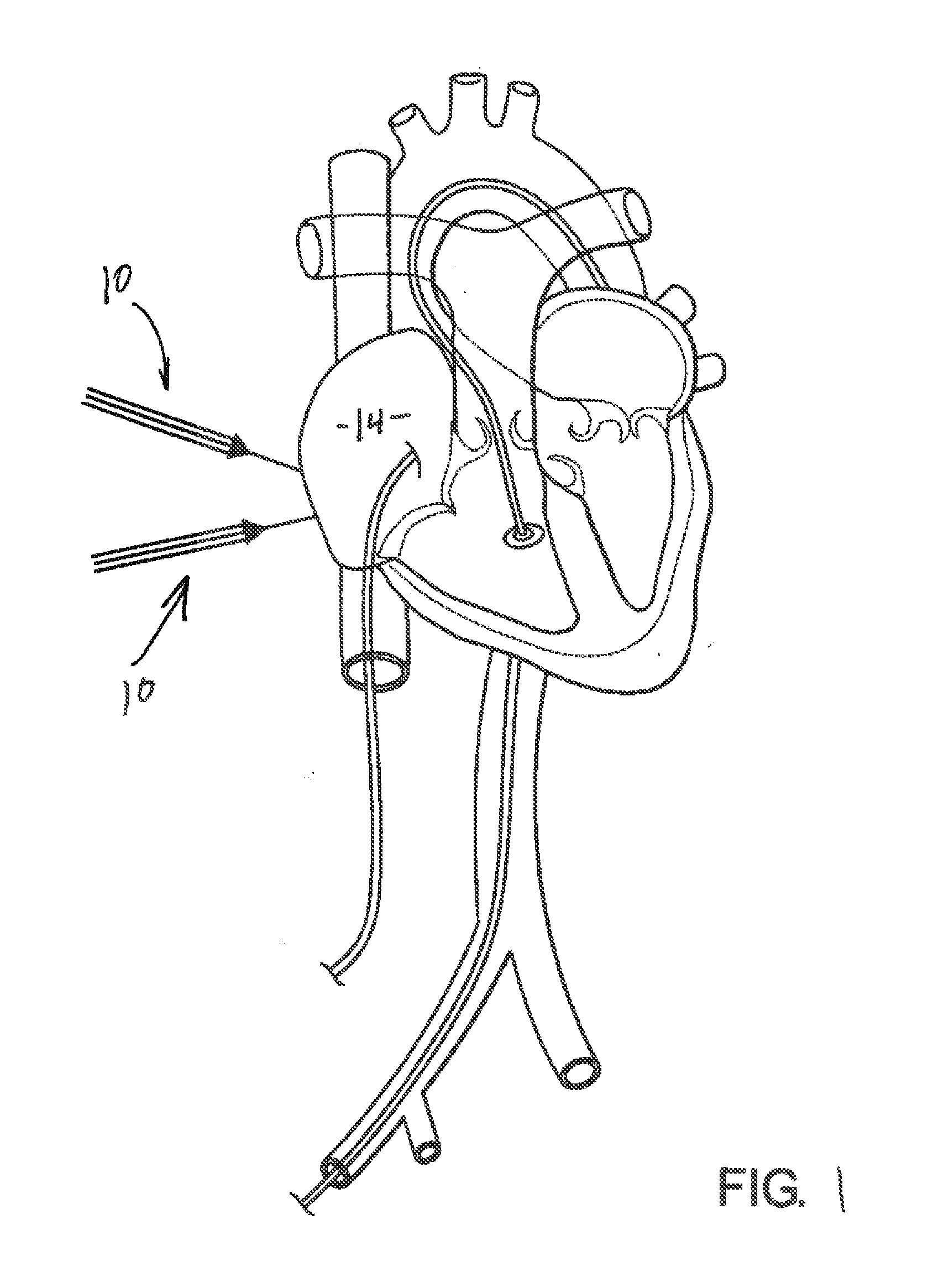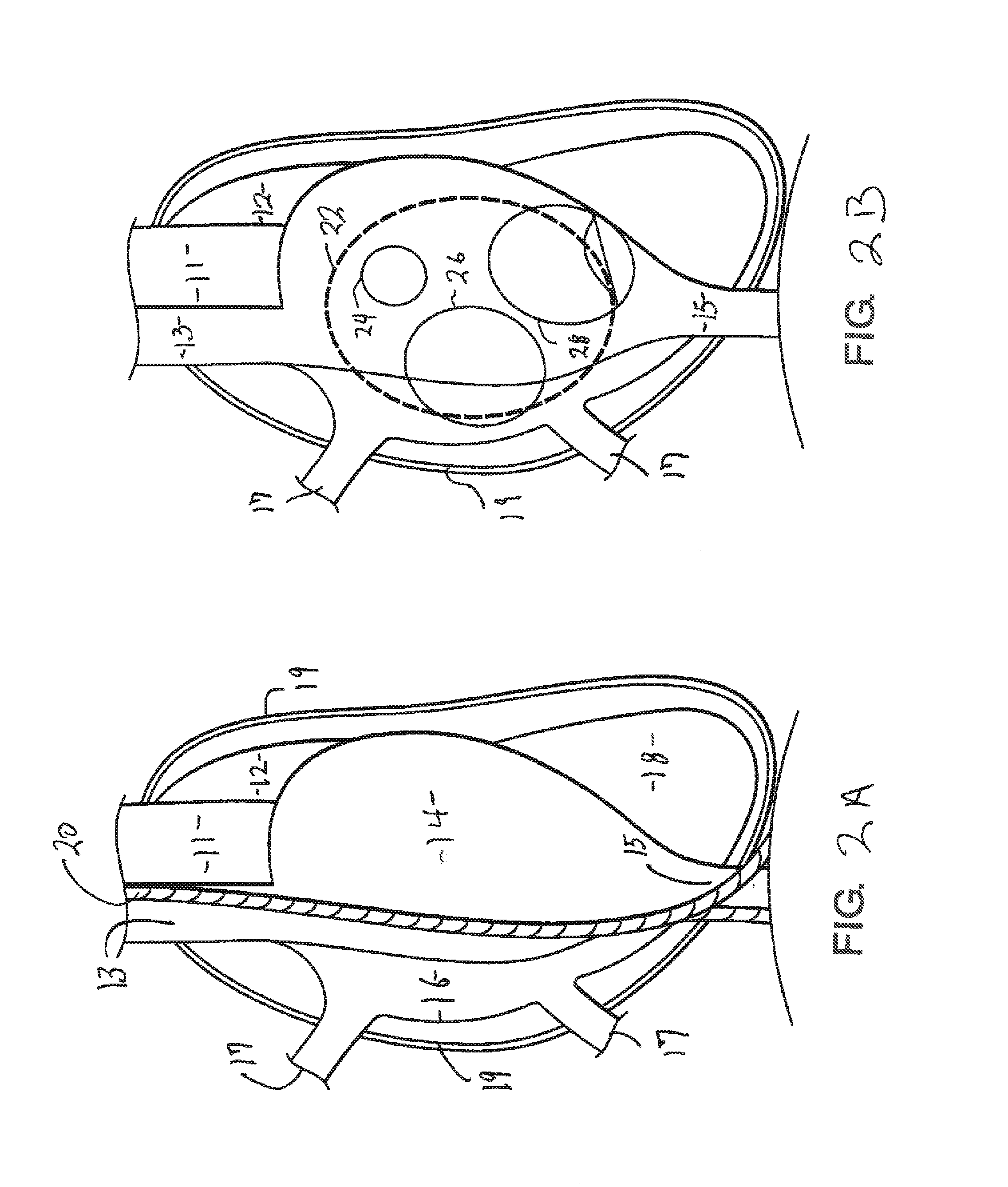Introductory assembly and method for inserting intracardiac instruments
a technology of intracardiac instruments and assembly methods, which is applied in the field of intracardiac surgical procedures, can solve the problems of large openings in the chest cavity, increased risk of infection, and inability to perform surgery, so as to facilitate the introduction of comparatively large instruments, facilitate the introduction of instruments, and reduce the size
- Summary
- Abstract
- Description
- Claims
- Application Information
AI Technical Summary
Benefits of technology
Problems solved by technology
Method used
Image
Examples
Embodiment Construction
[0070]As represented in the accompanying Figures, the present invention is directed to an introduction assembly and attendant method for the insertion of medical instruments, such as catheters, through a thoracic passage and corresponding intercostal spaces into either a right or left atrium of the heart for the purpose of performing predetermined cardiac maneuvers on intracardiac structures, as required.
[0071]For purposes of clarity and reference, FIGS. 1, 2A and 2B are schematic representation of the anatomy of the heart. Accordingly, implementing one or more preferred embodiments of the present invention, multiple instruments, including catheters generally indicated as 10, may be concurrently disposed in either the right or left atrium of the heart. As will be set forth in greater detail hereinafter, the instruments 10 pass through the thoracic wall and appropriate ones of intercostal spaces into an interior of a targeted one of the left or right atrium by means of a formed entry...
PUM
 Login to View More
Login to View More Abstract
Description
Claims
Application Information
 Login to View More
Login to View More - R&D
- Intellectual Property
- Life Sciences
- Materials
- Tech Scout
- Unparalleled Data Quality
- Higher Quality Content
- 60% Fewer Hallucinations
Browse by: Latest US Patents, China's latest patents, Technical Efficacy Thesaurus, Application Domain, Technology Topic, Popular Technical Reports.
© 2025 PatSnap. All rights reserved.Legal|Privacy policy|Modern Slavery Act Transparency Statement|Sitemap|About US| Contact US: help@patsnap.com



